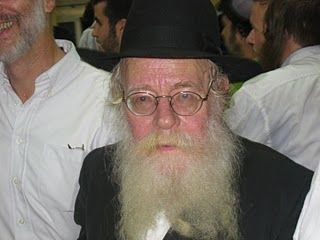Noam, of blessed memory, giving pal Daniel a buzz cut
I first published this post October 2, 2007, a little more than a year after Noam Yaakov Mayerson, of blessed memory, was killed in the Second Lebanon War. This morning, I joined Noam's parents, my cousins Gila and Chaim, and his immediate and extended family, friends, and community at the National military cemetery on Mount Herzl to remember him on the seventh anniversary of his death.
To honor Noam's life and to carry forward the work he started and did not merit completing, his parents, teachers, rabbis, and educators developed Darchey Noam, a comprehensive online guide (Hebrew) to the land of Israel. The guide, a publication of the nonprofit of the same name, incorporates Noam's educational vision and the experiential activities he created. A unique feature of the guide is its invitation to study Torah with a hands-on exploration of the physical, spiritual, and historical aspects of the land of Israel.
* * *
לוּלֵי תוֹרָתְך שַׁעֲשֻׁעָי אָז אָבַדְתִּי בְעָנְיִי
תהילים קי"ט
Had not your Torah teaching been my delight,
I would have perished in my affliction.
—Psalm 119

So begins the invitation (excerpt shown on the left) from my cousins Gila and Chaim to join them in a
Hachnasat Sefer Torah, presentation of a Torah scroll in
Tekoa, an Israeli settlement near Jerusalem, on October 1, 2007.
The photo is of their son
Noam Yaakov Mayerson, in whose blessed memory Isaac Leib and Ruth Rennert commissioned the hand-lettered Torah as an
ilui neshama, an elevation of soul (or spirit) of the departed through the
mitzva, good deed done in his name. On August 7, 2006, Noam was killed in the
Second Lebanon War when Hezbollah terrorists opened fire on an Israel Defense Forces unit in the southern Lebanese town of Bint Jbeil.
Psalm 119 had special meaning for Noam, and so my pious cousins choice of verse reflects his and their love of Torah, which guides and sustains their lives. Since Noam's death, they have come together with family, friends, and community in sorrow. Today, more than 400 people honored Noam and celebrated the
simcha — joyous occasion of the Torah presentation!

Days before the presentation, at the
Siyum Sefer Torah, completing the
scribal process, a chosen few penned the last letters. In the photo shown here, Chaim, quill in hand, calligraphs on the parchment.
For centuries, Jews have dedicated the scribing of a Torah scroll to commemorate, honor, or strengthen other Jews. Of 613
mitzvot, commandments in the Torah, the final one is to scribe a Sefer Torah.
Today, the Torah was brought on permanent loan to
Yeshivat Hesder Tekoa, where Yehoshua, Noam's elder brother, teaches and where Yoni, his youngest brother, studies.
The procession began in the settlement synagogue from where the Torah, carried under a
chupa, bridal canopy, and dressed in fine velvet cover and sparkling silver crown, continued to the Yeshiva.
Once there, throngs danced with the "Tree of Life" (Proverbs 3:18).
Among the celebrants was
Adin Steinsaltz, head of the Yeshiva and noted rabbi, scholar, philosopher, social critic, and author who, in 1988,
Time magazine called a "once-in-a-millennium scholar."
Noam's close friend Daniel also danced with the Torah . . .
. . . while the band played music and sang.
In the Sukkah, Yeshoshua read aloud Chaim's reflections on the celebration and on Noam's life.
Everyone in the Sukkah feasted . . .
. . . and Noa and Noam, both named in memory of their uncle, enjoyed getting to know one another.
Thanks to Noam's friend Gadiel Boar who took the first photo, and to his aunt Lynn Mayerson Berger who took the rest.
My related posts on Noam

















